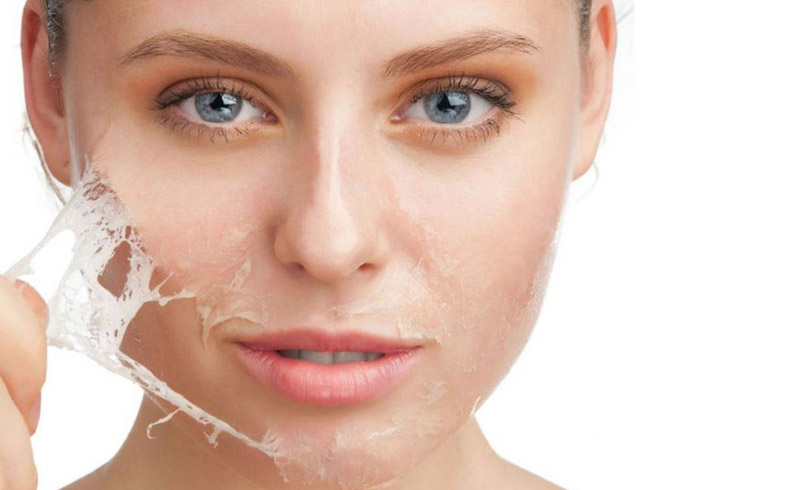
From: Fitness Republic
Chemical peels are only ideal for specific conditions. Severe wrinkles, bulges and skin sags may not respond well to the treatment. Such conditions require more advanced surgical procedures, such as laser resurfacing, facelift, eyelid lift, brow lift or soft tissue filler. If you have one of these conditions, consult a dermatological surgeon to advise you on the most appropriate treatment procedure.
Share
See more at: Fitness Republic
![[feature] What to Know About Chemical Peels](https://blogger.googleusercontent.com/img/b/R29vZ2xl/AVvXsEgavBDwOKMGjfWm7gKNvtKPWhnDRnQhyphenhyphenDkqmXxe9i2Mq4vg1yShHfAiSBDaEfgcIHoQpADCC2YyeAewMLDvpn1hgK_DkkX0GsrxlqT2OajGEBRWW6czWg1qXPMJdyRI4xkeFKhboFoj5gAo/s1600/women+2.jpg)
Chemical Peels
Chemical peels enable you to improve your skin’s appearance. With this procedure, a chemical solution is smeared on your skin, making it blister and peel off, leaving behind smoother, less wrinkled skin. Chemical peel procedures can be performed on the hands, face or neck. They can be used to remove wrinkles caused by aging and sun damage, reduce lines under the eyes and around the lips, remove the appearance of mild scars, remove or reduce age spots, dark patches due to birth control pills, and freckles, treat certain types of acne and improve the feel of the skin. After undergoing a chemical peel in Fort Worth, the skin will be more sensitive to the sun and you’re encouraged to wear a broad-spectrum sunscreen on a daily basis.The Ideal Candidate
Typically, fair and light-haired people are ideal candidates for chemical peels. Dark-skinned people have higher chances of having an uneven skin tone post-procedure. However, this does not mean that darker-skinned people will not have good results, because the outcome of a chemical peel procedure also depends on other factors such as the type of problem being treated.Chemical peels are only ideal for specific conditions. Severe wrinkles, bulges and skin sags may not respond well to the treatment. Such conditions require more advanced surgical procedures, such as laser resurfacing, facelift, eyelid lift, brow lift or soft tissue filler. If you have one of these conditions, consult a dermatological surgeon to advise you on the most appropriate treatment procedure.
Preparation
Before getting a chemical peel, inform your doctor if you have any history of cold sores, or scarring. The doctor may advise you to stop taking certain types of medication such as Renova, glycolic acid or Retin-A. He or she will prescribe other antibiotics or antiviral drugs to replace those. Depending on the goals of your treatment and condition of your skin, the doctor will determine the depth of your peel. The surgeon will also inform you whether you’ll be okay to drive yourself or you’ll need someone to drive you home after the procedure.The Procedure
A chemical peel can be performed in a surgery center or in a doctor’s office, as it’s an outpatient treatment. The physician will thoroughly clean your skin before applying one or more chemical solutions such as lactic acid, carbolic acid, trichloroacetic acid or glycolic acid to small areas on the skin. The chemical solutions create a small wound that lets new skin take its place. A sunburn-like reaction occurs on the skin, lasting about ten minutes, although the degree depends on the type of chemical peel being done. You will experience a stinging sensation after, but the pain can be eased by placing a cool compress on the skin. You may need pain medication if it was a deeper peeling procedure.Results and After Effects
After the procedure, you may experience redness of the skin, followed by scaling which lasts for about one to three weeks. Deep or medium depth chemical peels may be accompanied by blisters that will crust and peel off after one or two weeks. Mild peels may demand several sessions at two to three-week intervals before you achieve the results you want. You may need bandages after the treatment, and since the new skin will be fragile, you’ll have to avoid the sun for a few months.Share
![[feature] What to Know About Chemical Peels](https://blogger.googleusercontent.com/img/b/R29vZ2xl/AVvXsEgavBDwOKMGjfWm7gKNvtKPWhnDRnQhyphenhyphenDkqmXxe9i2Mq4vg1yShHfAiSBDaEfgcIHoQpADCC2YyeAewMLDvpn1hgK_DkkX0GsrxlqT2OajGEBRWW6czWg1qXPMJdyRI4xkeFKhboFoj5gAo/s1600/women+2.jpg)






















